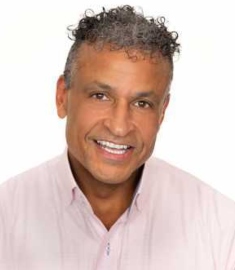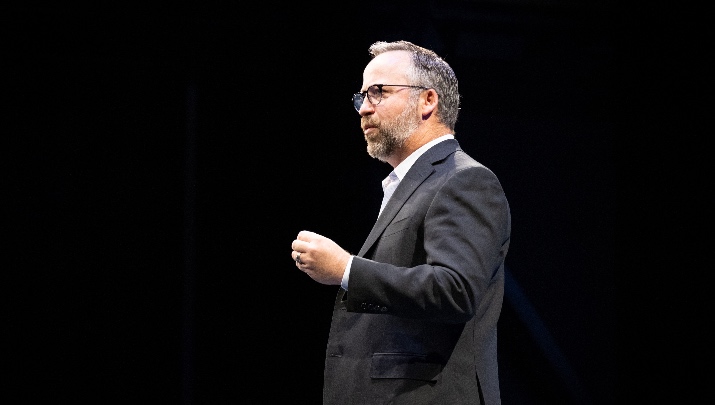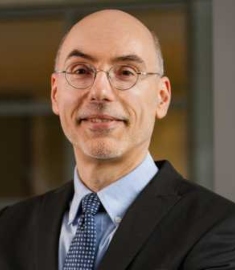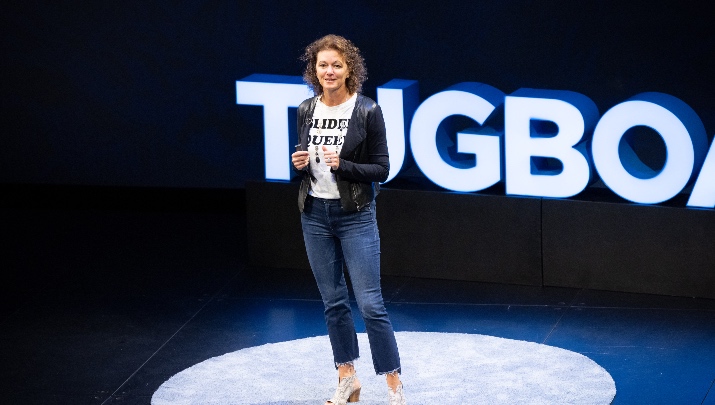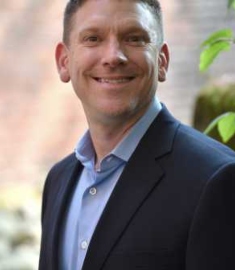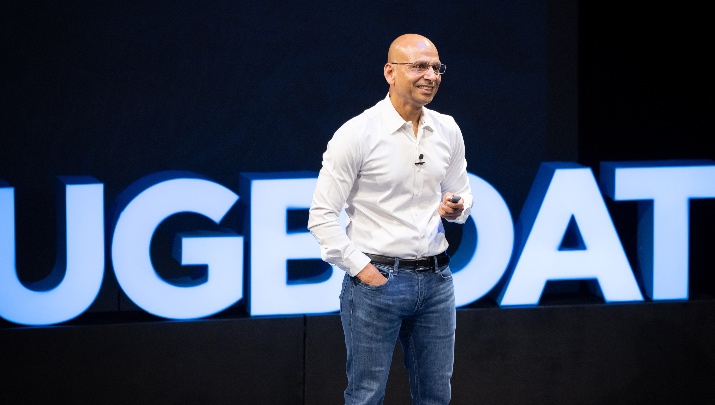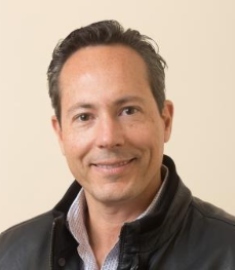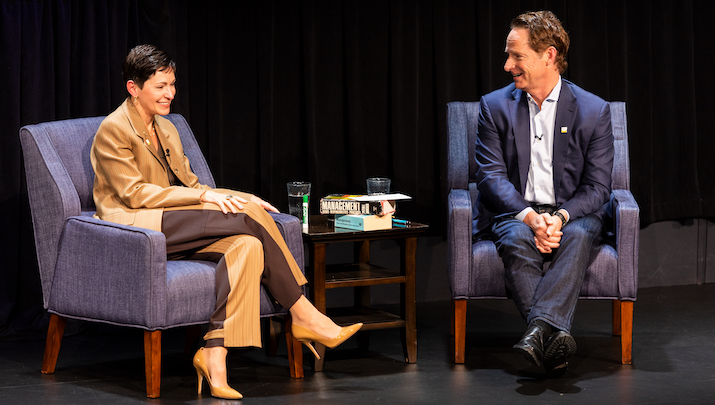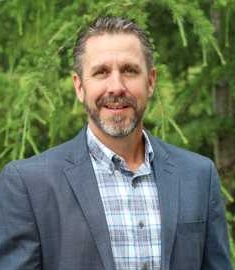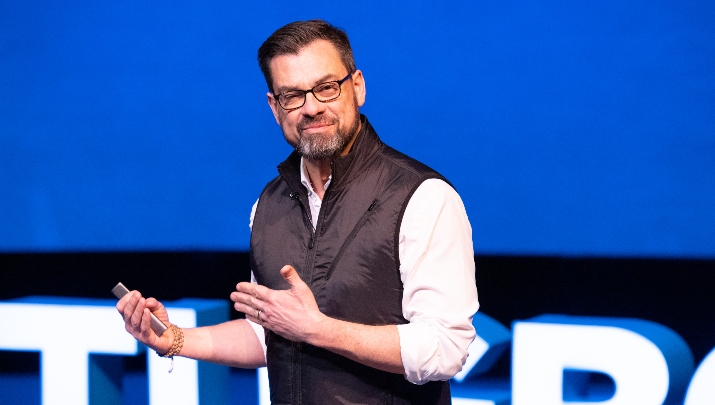Modern Leader
This article draws heavily on JeVon McCormick’s recent book, Modern Leader, published in July 2022.
Can you be a leader if you are following a well-worn playbook? Doesn’t that make you a follower? Further, what if that playbook is broken? For too long, in education, in business, and in society, we have been following a playbook that is indeed broken. The good news for leaders of companies is, stepping outside of it is not only the best way to right the wrongs it perpetuates, but also a fantastic way to reap the benefits of a larger and better pool of applicants for your company. It is the only way to lead us into the future.
Before we continue, I want to clarify that I think any discussion of blame must be laid aside. The question of fault gets us nowhere. But we must agree that although it may not be our fault that the system is broken, it is certainly our responsibility to fix it.
The essential problem with the playbook we have been following, specifically as leaders of businesses, is that it leaves no space for an enormous portion of our population. As Evergreen® leaders, I think we are better poised than anyone to agree that good people are the key to a successful business, so why wouldn't we want the deepest pool possible of good people?
There was a time when it was “business first,” but it’s become obvious that it must be People First; you need great people in your business to build great processes, and therefore drive Profit. And Profit, while always a partner to Purpose and the other 7Ps principles for Evergreen leaders, is a wonderful thing! It allows our companies to grow and thrive, it allows us to support our employees, and it allows us to do good in the world in the best way we can. So how do we move toward a place where we preserve, or even increase profit, all while stepping outside of the broken playbook? I propose three first steps.
Open Your Eyes
First, look around and acknowledge that we live in a society characterized by extreme inequality. It’s easy enough to talk about merit, about the value of hard work, and about the very few, visible, and wonderful examples of people who have managed to transcend the life they were born into. But it’s not as simple as equal effort = equal opportunity. And it starts early. A child born into poverty, as I was, or even just born poor will be exposed to 2,000 words by the time they are two years old. This becomes their base as they develop their linguistic functions, their brains, and their ability to learn. A middle-class child, in contrast, will be exposed to 30,000 words in the same time frame. Imagine the advantage these children have already, at age two. They are still years away from school.
In order to begin to make change, we must first accept that change is necessary. Open your eyes.
Open Your Doors
When the two children described above–let’s call them ReVonté and Blake–grow up and one day send you their resumes for an open position in your company, the old playbook and the habits formed around it kick in. Both candidates have undergraduate degrees, but they are far from being on equal footing.
ReVonté managed to complete four years of college, spending the first two in a community college and the last in a four-year state school. All throughout, he had to work to pay his way, which meant it took him more than four years to get his degree. Further, in the summers, he had to make as much money as possible, which put him out of the running for an unpaid internship in your industry. And finally, his name is ReVonté, which clearly identifies the world he comes from.
Blake went straight from high school to a four-year college and finished in four years. He did not work during the school year and was therefore able to focus exclusively on school and earn top marks. During the summer, his dad’s friend helped him get an internship at a great company, and though it was unpaid, he was able to live at home. He has, as a result, real work experience.
It’s easy to see which candidate is most likely to get an interview, and for reasons that, under the old playbook, seem reasonable and fair. But let me ask you to consider this: Which young man had to demonstrate more perseverance, more grit, and more resourcefulness to get where he is? You won’t know for sure until you invite them both in for an interview. Open your doors.
Open a Backpack
The old playbook, as we saw in the example above, rests upon the logic that education is the key to preparing people for jobs. Yet the inequality that began when ReVonté and Blake were two years old just got worse as they moved into school. It’s reasonable to expect that students make an effort, work hard in school, and strive to learn. But what if they don’t have the most basic supplies to complete their assignments? What if they don’t have a computer? Or what if the school gives them one, but they don’t have internet at home? The list of reasons that school is not the great equalizer we assume it to be is extremely long. If we want to continue to point to education as the key, we must make sure good education is possible. For everyone.
At Scribe Media, we saw this problem and decided to literally Open a Backpack. We found the school in our area with the highest number of kids getting free lunch and we decided to provide a backpack filled with ALL the supplies on the school’s list for all 500 kids in the school. We all came together and filled the backpacks ourselves in what became an outstanding company-wide event. It cost us $18,000. And it was a write off.
If you are going to continue to preach and believe that education is the key, then help make education equal. Open a backpack.
As you begin the work of opening your eyes, your doors, and a backpack, there are concrete steps you can take to move away from the old playbook. For example, as you prepare to write a job description for a new opening you are about to post, ask yourself, is a college degree really necessary for this job? What are the skills, rather than the degrees, that will make a person successful in this role?
As you prepare to head into an interview, instead of creating a list of questions focused on education and work experiences, step back and think about the characteristics you hope your new hire will have. Are you looking for curiosity? Are you looking for someone who is a self-starter? You might have more success discerning whether a candidate possesses these characteristics if you broaden your scope and ask about life experiences in general. The keys to perceiving the true strength of a candidate’s character might not be far under the surface, but your questions need to leave room for them to rise to the top.
The modern leader will be the leader who looks to others to help understand the big picture, and who designs a playbook that makes space for both ReVonté and Blake. The modern leader will not simply tolerate or accept, because both of these terms still imply insiders and outsiders. The modern leader will push past his or her comfort zone, invite ReVonté and Blake in for an interview, get to know them both, hear both of their stories, and then decide who has the skills necessary to do the job.
Economic Development Deals: Why Evergreen Companies Can Be Ideal Candidates
Economic development groups exist in virtually every city, town, and community. Their aim is to improve, in any way they can, the quality of life and the opportunities for the local population. Attracting businesses that will bring positive change to their communities is one significant way they do this, yet businesses often overlook the opportunities this might open for them.
In this short Tugboat Institute® talk, John shares some of the ways he has seen economic development teams work with businesses, including his own, Community Impact Newspapers. As Evergreen® businesses, Tugboat Institute members’ companies are especially strong candidates for the advantages available, because of their Purpose-driven, People-First focus; they consistently bring good into the communities they serve.
Watch and be inspired to look for opportunities in your own community, or in a community you are considering entering.
Carving Out a Space to Give Back to Science
A typical Contract Research Organization, or CRO, will contract with companies in the pharma or biotech industry to help them design, manage, and analyze various aspects of clinical trials that are conducted to study the safety and efficacy of new drugs. Most small to medium-size CROs will typically grow until a point when owners or investors will look at selling to either private equity firms or a larger CRO. It’s a lucrative path, but it’s not the path of my Evergreen® company, Innovaderm.
I began my career as an academic researcher. Twenty-two years ago, I started Innovaderm, and five years later I left academia to devote my entire time to my company. We are a CRO that specializes in dermatology, and though our headquarters is located in Canada, we also have employees in the U.S., Spain, India, and Poland. Like most CRO’s, we contract with pharma and biotech companies on studies, in our case involving treatment for diseases of the skin. A client may come to us with a drug they think may improve a certain disease like psoriasis. We might help them design the study, write the research protocol, obtain the proper approvals, manage the project, coordinate and monitor the sites conducting the study around the world, and have our biostatisticians and data managers analyze the data.
There are 3 phases of clinical research: phases 1, 2 and 3. Phase 1 is usually the first study in human beings and focuses on drug safety and tolerance. Phase 2 is the first study in a patient population having the disease for which the drug is developed. Phase 3 is a larger study, or often two identical larger studies, that are needed before a drug can be marketed, to characterize the safety and efficacy of the drug.
Most of our time is spent managing phase 2 and 3 studies, which is typical CRO work. However, between 5-10% of research projects that we manage are where we are unique and different from our industry peers. This is where our Evergreen philosophy sets us apart.
Often, we have ideas for studies that may not interest our clients, but whose results would be important for advancing science and treating people more effectively. In what we call Internal Studies, we fund and conduct these studies on our own. Here’s an example.
A significant number of people suffer from eczema on their hands. It can be very painful and can prevent people from working or functioning normally. Studies to better understand the cause of hand eczema have been limited because patients often refuse to have a biopsy from their hand, which is a very painful procedure. We recently initiated an internal study on hand eczema to better understand this condition, using non-invasive imaging techniques and techniques to study gene expression and bacteria on the skin. If we can advance understanding and treatment of this condition, we would be able to help a great many people. This study is entirely internal; we have no sponsors, no partners, and no one company will profit from our work, including ours. We simply hope to advance science’s understanding of this disease. It’s a People First initiative in the broadest sense of the term.
A few years ago, I wanted to find new ways to be able to fund and protect the future of non-industry-sponsored drug studies so we created the Montreal Dermatology Research Institute (MDRI), a non-profit through which some of this work can be done. Innovaderm makes donations to MDRI which can fund studies related to skin diseases that are conducted in an academic environment. An exciting MDRI initiative that was announced in 2021 is a multi-year grant for research in skin-related, neglected tropical diseases. A disease is typically categorized as ‘neglected’ when it exists in a country or region where it is difficult to adequately fund research, in other words, lower-income countries and regions.
Every week, I receive emails from people that want to buy our company. I say, “No. That’s not what I want to do.” Because I know what will happen. If we sell the company, the 90-95% business that we do that is making money will become the focus of the company. The 5-10% that is for the advancement of science will not be interesting to them because it is more of an expense. It will disappear. In addition, the buying company would not donate money to a non-profit such as MDRI, would restructure Innovaderm, and a large number of people would lose their jobs.
I don’t want Innovaderm to be like the other CROs. My philosophy is aligned with the Evergreen 7Ps® principles. With the non-funded internal studies we conduct and the donations we make to the MDRI, we are deeply committed to giving back to science. Because of this, we are unique in our industry. Most CROs are driven to make as much profit as fast as possible and do not embark on projects that don’t generate profit. That’s what makes us different. And that’s the reason I am a member of Tugboat Institute®.
100 Years of Innovation
White Castle is a century old company that is growing and thriving. Lisa Ingram, the fourth generation CEO of the company her great-grandfather founded, is proud of the moves they have made in recent years to innovate and stay relevant for future generations of Cravers. Lisa’s predecessors were innovative in their own ways, but product innovation has been a relatively recent trend at White Castle. Like everything at White Castle since the very beginning, it’s been driven by a mindset that is decidedly People First.
In this Tugboat Institute® talk, Lisa shares the history of innovation at White Castle and brings us up to the present day. Above all else, this Evergreen® company gets its best ideas by talking and listening to its devoted employees and customers.
Watch and be reminded that when they are cared for and honored, your employees and customers can be your best advocates and your best source of new, powerful ideas.
The Key to Building a Global Business
Before becoming the seventh generation President & CEO of Hollingsworth & Vose, an almost 300-year-old global leader in filtration and energy storage solutions, I spent seven years living and working in China. The experience changed the way I think about business and the world and taught me one fundamental lesson that drives my work today. It’s not your revenue, your number of employees, or even the addresses of your offices that make you a global company. If you want to truly be global, you have to be global in your thinking, in your mindset, and in your infrastructure.
My journey to this realization started in 2007 when I was working for General Electric and signed on for two years abroad. The initial plan was to go to Belgium, but about six weeks before we were slated to depart, my wife and I found out that plans had changed and we were off to Shanghai, China instead. We had both been eager to spend time abroad, so we adjusted to the new plan and set off with our children, who were four and five at the time.
The original assignment was for two years. We wanted to make the most of the experience, so we made a few choices right off the bat that were not typical for expats. We enrolled our kids in a local international school, rather than the American school, and despite the fact that most of our Irish, English, and Australian friends lived in heavily expat neighborhoods, we chose to move to a very local neighborhood instead. We did do most of the other, usual expat things: language lessons, classes on how to assimilate, and classes on the culture of China. In the early months, I would have told you I really understood China and was becoming an expert. But as we neared the end of our two years, I found that the more I learned, the less I understood. I was not ready to leave.
Around that time, I had the good fortune to meet Val Hollingsworth, President and CEO of Hollingsworth & Vose, which today serves the global market with 13 R&D facilities strategically located in the Americas, Europe and Asia. At the time, Val was looking for a new managing director for H&V’s expanding operations in Asia. Drawn by H&V’s reputation for innovation and its commitment to creating a cleaner, healthier, more sustainable world, I left GE in 2009 and joined H&V. Over the five years I spent in the role of Vice President and Managing Director for H&V’s Asia operations, my learning and understanding of what it means to be a truly global company shifted dramatically.
My years at GE were a great start to my career in China; GE was extremely well-established in China, and I learned a lot from being part of their large team. When I got to H&V, which had a smaller presence in China at the time, I started to really learn the complexity that is China.
For one thing, GE was firmly a western company operating in a foreign country. I learned a lot about managing a business, but I was managing a western business with a western mindset. The members that were not from the west were expected to adopt the culture and practices in place. At H&V, we were, as we always have been, heavily innovative and interested in creating something new. Initially, our strategy was to serve our western customers in a western market, but we were struggling. As we looked for ways to innovate and improve, we started listening to the local markets as well. We saw great opportunity there and started moving to become more global – or to become global in a different way. Doing so would make us a valuable partner and a true worldwide leader.
In terms of the specific skills and lessons that I learned as I moved through this experience, the biggest ones are related to communication. Of course, learning the language of a country affords an important window into understanding a culture. But it’s not all about language. Probably because I didn’t have a perfect understanding of the language, I found that I started to develop other ways to try to understand what people were saying to me. I paid close attention to tone, to body language, and to other non-verbal cues.
In China in particular, people will always be unfailingly polite and will tell you things in a way that sounds pleasant and positive. But there is usually a subtext. In the west, for example, once you have a contract, you have a deal. But in China, it’s all about relationships. A contract is just the start. I learned to pay attention to people’s behavior and take the time to develop that relationship, to ensure a good outcome for our endeavors.
Within the company, I started to see that we had been hiring the wrong people, too. It is typical for a foreign office of a U.S. company to look for the people who speak the best English and to assume that they will fit in the best and therefore be the most valuable. But I learned that intellectual curiosity and a willingness to dig in are by far the most important characteristics in a new employee. And if they come from a different cultural and linguistic background, that is actually a bonus, not a hindrance. I understood that if we wanted to succeed in Asia, we needed people who could understand the local markets and think in an eastern way.
Now that I am back in the States, I see that that the value of a diverse team with a diverse mindset is important no matter where you are if you intend to be successful on a global scale. Yes, it takes a willingness to make an effort and a willingness to get past the discomfort of not understanding everyone’s perspective right off the bat. You have to pay attention to things such as not over-using colloquialisms in meetings and being sensitive to the fact that a meeting you schedule for late morning will fall late at night for teammates in Asia. But the rewards of working with a diverse team outweigh the challenges many times over.
This goes for gender equity on your team too, by the way. They are great at this in China; having had a diverse and gender-mixed team, I never want to go back. If you are not actively recruiting female candidates, you are missing out on 50% of the great people out there.
Since I’ve returned home, I have also realized how diverse this country is. I hadn’t seen it before, but we can be very regional and factional, which also adds strength and diversity to a team.
At H&V, we have been moving toward a more open and diverse mindset and building a workplace where all are welcomed and heard for some time. It’s a process. I am excited to bring my international perspective to the table to strengthen the work that was already underway and to help us become even better. Study after study has shown that diversity strengthens a team, but now that I have lived it, I don’t need to read the studies. It’s happening right in front of me.
Why Love and Leadership are Key to a Thriving Evergreen Company
Jeet Kumar had cause, throughout his childhood, to consider the keys to making it possible for a person to thrive. Above all else, people need to be shown love. As he built his successful Evergreen® company, In Time Tec, Jeet has become an impactful leader, largely through keeping love at the center of his leadership style.
In this Tugboat Institute® talk, Jeet shares the beginning of his life’s journey, how he came to put love at the center of his thinking, and the different ways love can show up in a business. Although we are not accustomed to talking about love when we talk about business, Jeet argues that it is critical to effective and meaningful leadership.
Watch and be inspired to infuse your leadership style with love.
Purpose Plus Learning Can Make the Impossible Possible
“People who say it cannot be done should not interrupt those who are doing it.”
- George Bernard Shaw
I am Chairman & President of Shasa, a fashion brand with more than 100 stores in the best shopping malls in 31 of the 32 states in Mexico. My brother Carlo is CEO and together, we founded the company in 1990. We started from scratch. Today, we are a strong and proud Evergreen® company, but I can’t say that the purpose that drives Shasa in 2022 is the same one that has driven us from the beginning. It has been a journey characterized by challenging odds, daunting obstacles, and, above all else, constant learning.
My early childhood was spent in a town on the Gulf of Mexico, and I remember life there as very happy. When I was still young, however, my mother got sick and needed a transplant, so the family moved to Mexico City. Suddenly, life was hard and unhappy, and even more so when my mother passed away. I was nine and Carlo was six. A couple of years later, our father re-married and this brought even more challenges. Everything had changed drastically within a few short years, inspiring Carlo and me to set our first life goal: somehow earn enough money to run away and become independent. Thus began our journey.
The most obvious way to make money seemed to be by selling something, so we started selling. In the beginning, we bought handmade fashion jewelry and sold it. I was about 11. After a few years, our dad, who is a chemical engineer, taught us how to make a Pine-Sol-type cleaner, so we made that and sold it. We sold it to friends, neighbors, anyone who would buy it. Although we didn’t get rich and we made a lot of mistakes, we learned a lot about how to collect money, about the struggles maintaining consistent quality in our product, and about balancing the cost of materials with price. At that time, I was 14.
Although things were tough at home, my brother and I did have the opportunity to go to college. Nevertheless, we remained fixated on building a business. When I was a sophomore in college and Carlo was still in high school, we started selling clothes. Miami Vice was wildly popular at the time, so we had the idea to manufacture clothes inspired by the ones they wore in the show. Remember the short, square pants and the neon t-shirts? We started making those and it turned out that we had hit on a good item. We bought the fabric, found a manufacturer, and created our own brand.
Our vision really locked into place with this venture. Carlo and I had discovered our Passion for Fashion; it’s driven us and been part of the organizational culture of our company ever since.
We sold the clothes to students at the high school and the college, and we were very successful. Soon we started selling wholesale to retail stores. As a result of this success, we finally made enough money to leave home, so we did. It had taken a long time, but we had earned our independence.
Moving through this process, we learned the hard way, by doing and failing–sometimes dramatically–but we never quit; we kept learning and trying again, figuring out over time how to minimize risk and maximize the upside.
In those days, because we were bringing our product to our customers, we needed a place to display our clothes. We had a yellow Volkswagen Beetle, so we filled the trunk with the clothes, drove around to the schools, and sold out of the car in the parking lot. That was, I suppose you could say, our first store.
That Beetle took us to many fun places, always combining business and pleasure. We loved going to Acapulco for the weekends, parking the car, and selling our clothes. Only after we had sold all of our merchandise and hit our goal did we head to town to have fun; it was our reward. Then, Sunday night, we drove back with all the cash we’d made.
Soon, we started traveling farther, to Canada and the US, always with the same plan: travel, do business, make money, and learn along the way. As we traveled, we would bring materials from wherever we had been and sell them. We learned about tariffs and the ins and outs of importing and exporting products. By the time I was 22, in 1990, we created our first corporation and, one year later, we opened our first real wholesale store. We started sourcing internationally – from India, Spain, the US.
Crisis equals opportunity. In the mid-nineties there was a huge economic crisis in Mexico, and everything collapsed. Although it was a hard time for our country, the market had cracked open, and we saw an opportunity for the business. Within less than two months, we turned all our storage facilities into manufacturing facilities, and we were finally poised to start building the company we dreamed of, turning Shasa into a private brand, exclusive to our stores, and controlling the whole supply chain.
On the day we opened our first Shasa retail store inside a mall, in the midst of the crisis, we announced to the friends and family we had invited that we were going to open 100 stores. Our dad was dubious; maybe one store each, he predicted. That was in 1995. Today we have 108 stores and over 500,000 sqare feet of retail space.
As we grew the business and grew up ourselves, we experienced our fair share of growing pains. To move past them, we did not rely on confidence and determination alone; we also sought more formal opportunities to learn. In 2000, for example, our company was growing fast, and we decided we needed to educate ourselves more about running a business, so we enrolled in IPADE Business School, in Mexico. We completed their management program, one year apart from each other.
In 2012 we again felt we had more to learn, so we applied and went to Harvard Business School, me starting in 2012 and Carlo in 2013. We have come to firmly believe that we can’t stop learning – there is no end to learning in this story.
Since the beginning we dreamed big; we visualized ourselves as very successful entrepreneurs. Despite the many obstacles we faced, we always believed we would make it happen.
Over time, our purpose settled into what it is today: to inspire and empower people to unleash their potential and accomplish stretch goals. We ourselves have managed to accomplish something no one thought we could. We hope to inspire others with our contagious passion because we have learned that, when united around a shared purpose, the potential for impact grows exponentially.
Fireside Chat with Penny Pennington and Dave Whorton
Penny Pennington is the sixth Managing Partner of Edward Jones, a financial services firm with over 15,000 branch offices across the US and Canada. With their focus on community and relationships, along with their 100 year history, Edward Jones is an exemplary Evergreen® company across all of the 7Ps.
In this Fireside chat with Dave Whorton, Penny shares her journey, beginning with her upbringing in Nashville, to becoming the leader of Edward Jones. She considers the impact each of the other five Managing Partners have had, and shares how the Evergreen 7Ps® principles show up at Edward Jones.
Watch and learn about the journey of this impressive leader and the impressive, Evergreen company she leads.
Switching From Defense to Offense
As leaders of companies, we have all experienced downturns. The economy, the markets, the political climate, the weather, or an invisible virus can all crop up and cause things to shift in unexpected directions. An instinctual response to adversity is to pull up the drawbridge and prepare to hunker down and wait out the crisis, minimizing expenditure and risk. But as I look back on my last few years as President & CEO of R.A. Heath Construction and Millwork, Inc, I have learned something about myself; when the going gets tough, for better or worse, I switch from defense to offense.
Taking a risk and trying something new as the knee-jerk response to a slowdown is not what I advise. Recklessness is never recommended. However, I have learned that when certain conditions are met, it can be right to favor the bold move.
It might be fair to preface this story with the admission that a strong willingness to be bold and try new things has been part of our culture at R.A. Heath for years. I have gained confidence from some early moves that were a little risky but that turned out great. One example is from a several years ago, when remodeling was still the core of our business. We were strong in general and had even pioneered a method for remodeling a café or restaurant that allowed us to guarantee it would take no longer than two weeks. Starbucks, among others, has adopted this method for all its remodels, incidentally. But I thought we might be able to find ways to serve our customers even better.
Closing a restaurant or café for a remodel necessarily means lost business, which is a hardship for our clients. I started wondering if there might be a way to mitigate that. We were building temporary cafés for our clients so they could recoup sales while they were closed. This was time consuming and a big expense for each project. I joked with our client that I could just build out one of our construction trailers to sell coffee. That seemed like a great idea, so I took it one step further; we bought and built out a fleet of trailers to rent to our clients to use during their remodels. It was a big cost to us up front, but then we had a plan to help our clients retain some revenue, and to make money ourselves at the same time. This is an example of the mindset I strive to model and inspire at R.A. Heath, and certainly laid the groundwork for how we fared through a really big crisis.
As an Evergreen® leader, the first thing I need to know is that I can take care of my team. This priority drove some of the decisions we made in the weeks and months after Covid hit. Our industry, as everyone knows, all but ground to a halt in 2020. Many of my competitors started laying people off immediately to cut costs as revenue disappeared. Driven by the desire not just to hang onto my employees, but to create opportunities for them to thrive, I started looking for new ways to deploy our manpower.
My sister is in the restaurant business and early on, she started struggling to meet the new standards that might allow her to remain open. Dividers for her booths and tables suddenly became a high-priority item, but she found they were in short supply. I reflected; we had millworkers, construction workers, and construction equipment. I thought–we could make those! It soon became clear that the demand for these dividers would continue to grow, so we considered how we could make this product even more profitable. At first, we were buying a piece of molding from the guy down the road, but I thought–we could make that, too! We bought more equipment, invested in training and were soon producing every aspect of the dividers. We brought all the profit margin back in house, our team was busy and productive, and we had a new product line and revenue stream.
Another opportunity I saw as we moved into the slowdown was time. We had been so busy, and things had been moving so fast that we rarely had the luxury of being introspective. But when things slowed to a crawl during Covid, instead of sitting around wringing our hands, we decided to take the opportunity to study our processes and expose some of our weaknesses.
One thing we realized was that our entire cabinet-making division, which had been automated at great expense several years earlier, was not optimal. It depended on all parts of the process working perfectly, and a small glitch in one area could stop production completely. I was also conscious of the fact that running this automated process was not ideal for my employees; I am dedicated to helping them learn a trade, but we were instead just teaching them to push a button.
With the help of my accounting and finance teams, we looked at the numbers and decided to make a bold move; we shut down the automated process, got rid of the hundreds of thousands of dollars’ worth of machinery, and reverted to making our cabinets by hand. If we weren’t an Evergreen company, we never could have done this because it took time to build back to profitability. But now we are teaching a trade again, we are less vulnerable to work stoppages, and frankly, the quality of our cabinets has vastly improved. It was a good decision.
When the crisis started to abate and regular business returned, many of my competitors were not ready to meet the demand. But we had kept all our employees, diversified our products and services, and planned for the price increases and the surge that hit us. We were in a strong position to roar back to life–even stronger than we had been before the crisis.
As a result of our successes with offensive rather than defensive moves, in both the good times and the bad, I am proud to say that at R.A. Heath, I have led the establishment of a culture of open-mindedness; I am constantly coming at my team with new ideas, and they are ready to run with them. We don’t need a crisis to innovate and try new things. We’ve gained confidence from past successes, and we have a strong process for vetting new ideas, to help weed out the ones that are impractical and troubleshoot the ones that have promise. It has created a mindset of creativity and problem-solving throughout the organization, and has been the key to our success, even through challenging times. At R.A. Heath, we are not content to survive; we aim to thrive.
Simple Tools
Rich Ledbetter, COO of Guarantee Electrical, has had the good fortune to be guided through his career by several great thought leaders and inspiring people, starting with Muhammed Ali. He learned to take the best of each lesson and use them as building blocks for his own philosophy of leadership, which he has boiled down to what he calls his Simple Tools.
In this Tugboat Institute® talk, Rich shares the lessons gleaned from some of the people whose thinking has shaped his own the most, including Jim Collins, Simon Sinek, and Pat Lencioni. All three contributed significantly to Rich’s Evergreen® leadership philosophy. At the heart of the Simple Tools he has built from these building blocks is trust.
Watch and be inspired to consider your own sources of inspiration and the leadership tools in your own toolbox.
